Hussam al-Mahmoud | Hassan Ibrahim | Khaled al-Jeratli
Since its military intervention on 30 September 2015 under the pretext of fighting the Islamic State (IS) group, Russia has placed great weight in Syria to turn the equation on the battlefield and rearrange the map on the basis of the dominant forces on the ground, after the Syrian regime lost control over large areas of the Syrian geography.
The statement of condemnation issued by the United States, Germany, Britain, France, Saudi Arabia, Qatar, and Turkey against Russian attacks that targeted civilians in Syrian cities did not attract the attention of the Russians, during which it called for “stop its (Russia) attacks on the Syrian opposition and civilians immediately, and focus its efforts on the fight against the Islamic State.”
Moscow has achieved gains on more than one level during seven years of Russian intervention, despite the high human cost, as 6943 civilians were killed, including 2044 children, according to the Syrian Network for Human Rights (SNHR).
This intervention also took different forms and dimensions and went through many variables and influence factors that painted a new image of the Russian military presence in Syria and affected Moscow’s image at the level of its international presence.
Enab Baladi discussed with well-informed researchers and political analysts the extent of the Russian gains in Syria, and Moscow’s priorities in the region, at a time when it is opening another front with the West through Ukraine.
Military impacts
Russia revived the regime’s control on the ground after it entered a state of clinical death with more than 100,000 Russian raids until August 2021, according to the figures of the commander of the Russian Air Force dispatched to Syria, General Evgeny Nikiforov, which he presented on the sidelines of a celebration of the Russian forces at the Hmeimim air base in the countryside of Lattakia, on 12 August, on the occasion of the 109th anniversary of the Russian Day of Combat Aviation.
To remove the Syrian regime from the clinical death state, Russia used and tested 231 types of its weapons in Syria in the period between the beginning of the intervention and March 2021, according to the Russian Military Files website, in a report issued on the 4th of the same month.
After regaining control over large areas, which were seized by the bombing of the regime and its Russian ally from the grip of the Syrian opposition, the attention of the regime and the Russians is turning towards the Lattakia-Aleppo international highway (M4) and its knot in the town of Saraqib, which is the last point of the regime’s control on the same road.
The repeated targeting of Russian military vehicles, which were patrolling with Turkish patrols, broke the Russians’ feet on this road after they had originally restored the Damascus-Aleppo (M5) international highway, in 2019, before two mysterious agreements between Russia and Turkey, which stopped long battles that might affect the geography of the region, and the identity of the powers controlling it.
The expert in the former Soviet republics and Russian-Turkish relations, Dr. Basil al-Haj Jassem, in an interview with Enab Baladi, cast doubt on the truth of the rumors about the decline of the Russian military presence in Syria.
He also considered that Moscow’s priorities are still fixed regarding the opening of the M4 highway, indicating that a step of this kind, if achieved, will serve not only Russia but also Turkey and Iran, its partners in the Astana talks, pointing at the same time to what he described as the “new, old priority” of Russia and Turkey, namely the withdrawal of US forces from the Syrian territory.
This opinion contradicts the view of the Syrian researcher Sinan Hatahet, who believes that Moscow is looking for a way out in Syria, coupled with its preservation of political gains, without changing the security and political map in Syria at the regional and international levels.
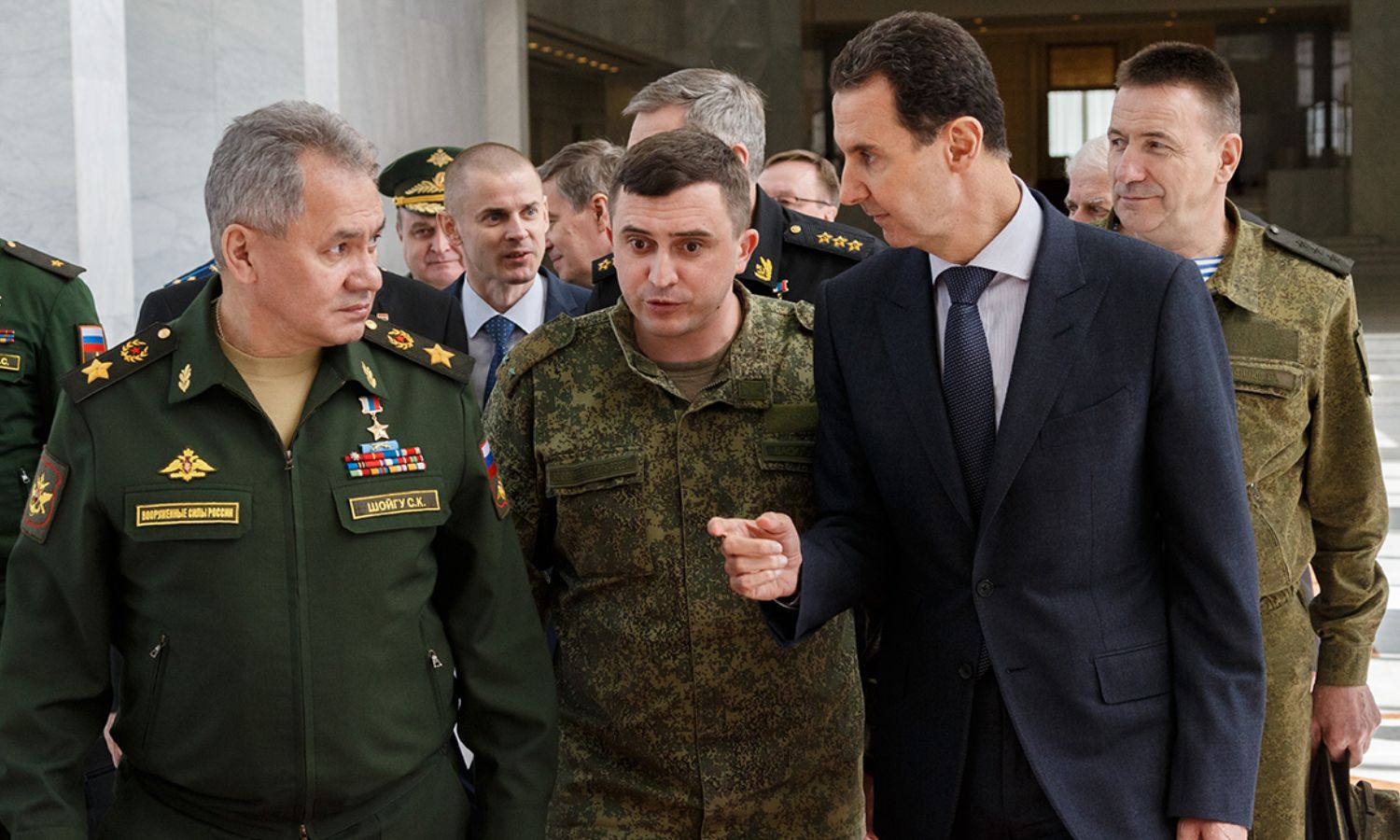
Syrian regime’s head Bashar al-Assad and Russian Defense Minister Sergei Shoigu in Damascus – 15 February 2022 (TASS via Getty Images)
Russia is preoccupied with Ukraine
Since the beginning of the Russian invasion of Ukraine on the 24th of last February, and more than once, there has been talk about Moscow using its military influence in Syria to serve the new front with Ukraine.
This appeared through a report published by the Syrians for Truth and Justice organization on 4 March, talking about the preparation of Syrians to participate in the war in Moscow’s interest, which was met with American skepticism on the part of the former US State Department envoy on Syria affairs, Joel Rayburn, which indicated, on the 7th of the same month, the absence of any evidence that the regime forces have “skillful fighters in urban combat,” or have skills of any kind, with the exception of drug smuggling.
What the former US envoy said came in response to an article published by The Wall Street Journal, which spoke of an American assessment indicating that “Russia, which has been operating inside Syria since 2015, has in recent days been recruiting fighters from there, hoping their expertise in urban combat can help take Kyiv and deal a devastating blow to the Ukraine government, according to four American officials.
For his part, Charles Lister, a senior Fellow at the Middle East Institute, ruled out such a move, considering on his Twitter account that “Bringing Syrians into Ukraine is like bringing Martians to fight on the moon.. they don’t speak the language, and the environment is totally different.”
Last April, The Moscow Times, the website of a newspaper published every three months, stated that Moscow is heading to reduce its forces in Syria (more than 60,000 soldiers, half of whom are officers), justifying the reduction by following up on Russian military operations in Ukraine.
Also, satellite images published by the Israeli space intelligence company ImageSat International on 26 August showed the dismantling of the Russian S-300 air defense system, which has been stationed for years near the city of Masyaf, northwestern Syria, and shipped to Russia, according to what was reported by the Israeli newspaper, The Times of Israel.
Press reports also continued, reaching talks about Moscow withdrawing the 217th Paratroopers Regiment units from Syria, in order to recruit them to fight in Ukraine.
The US weekly Newsweek reported on the General Staff of the Ukrainian Army on the 20th of last September that “the military-political leadership of the Russian Federation has decided to withdraw units of the 217th Paratroop Regiment from Syria and beyond preparations to roll over to Ukraine.”
The 217th Paratroop Regiment, founded in the 1940s, is an experienced group of soldiers who were previously sent to Belarus in January of 2022, a month before Putin ordered the Ukraine “special military operation,” according to Newsweek.
Void possibilities
Dr. Jassem pointed out the difficulty of judging the validity of the talk about the formation of a Russian security vacuum within more than one region (including Syria) as a result of the Russian war on Ukraine, considering that the war in Ukraine is still in its early stages.
In addition, the biggest conflict between Russia and the West has not yet entered the stage of “who will cry first,” noting at the same time that Russia broke through the Syrian gate the international isolation it was subjected to after 2014 due to the crisis in Ukraine and its annexation of the Crimea.
After its direct military intervention in Syria, most world leaders, especially from the Middle East, visited the Kremlin repeatedly, and Russia achieved many strategic goals from this, and it also failed to achieve some of them.
Vital and sovereign sectors controlled by Russia
The features of Russian hegemony and dominance at the economic and investment levels have emerged in Syria, with long-term and renewable contracts in vital and sovereign sectors accompanied by military and political support.
Despite the activity of some Russian companies in Syria for decades, it escalated after 2015, when Russia signed several agreements with the regime, which allowed it to control the Tartus port, extract phosphates, explore for oil and gas, and establish wheat silos and projects in various sectors.
Port investment for half a century
The Minister of Transport in the government of the Syrian regime, Ali Hammoud, announced on 25 April 2019 that the contract with the private Russian Stroytransgaz (JSC) company, for a period of 49 years, regarding the Tartus port is an investment contract, not a lease.
Hammoud’s speech was preceded, in the same month, by Russian statements by the Russian Deputy Prime Minister, Yury Borisov, who spoke after his meeting with the head of the regime, Bashar al-Assad, about the regime’s lease of the port.
The contract stipulated a “partnership investment” in the management, expansion, and operation of the Tartus port, according to the system of partnership contracts between the public and private sectors in force in Syria.
In December of the same year, Borisov confirmed that the Russian side intends to develop and modernize the work of the old port and build a new commercial port, and the investment value for the next four years (since the declaration) is estimated at 500 million US dollars.
He also pointed to Russian plans in some Syrian regions to extend a railway through Syria and Iraq to create a transport corridor linking the Mediterranean Sea with the Gulf, which would increase shipping operations through the port leased from Syria.
“Bloody” Syrian phosphates
Bashar al-Assad ratified the contract signed between the Syrian General Organization for Geology and Mineral Resources and the Russian Stroytransgaz (JSC) in April 2018 to extract phosphate from the al-Sharqiya mines in Palmyra, central Syria, for a period of 50 years, with a production of 2.2 million tons annually. It was approved by the Syrian People’s Assembly in March.
The agreement stipulated the sharing of production between the two parties so that the share of “General Geology” would be 30% of the amount of production, compared to 70% for the Russian company.
Under the title “Europe Buys’ Bloody’ Syrian Phosphates,” a report issued last June by a group of investigative journalists led by the Lighthouse Reports and the Organized Crime and Corruption Reporting Project (OCCRP) revealed that phosphates worth millions of dollars were exported from Syria over the years by a sanctioned Russian company by the EU and US and made its way into Europe’s fertilizer markets since 2018
The report stated that “Vessels carrying phosphates from Syria to Europe hide their activities by turning off their tracking systems on the way to Tartus port, Syria’s main phosphate shipping hub. They only turn them on again when their return journey is well underway”.
Italy started importing this phosphate in 2020, Bulgaria in 2021, Spain and Poland earlier this year, and according to trade data, Serbia and Ukraine were also major customers, as the two countries imported Syrian phosphate worth more than 80 million US dollars since 2019.
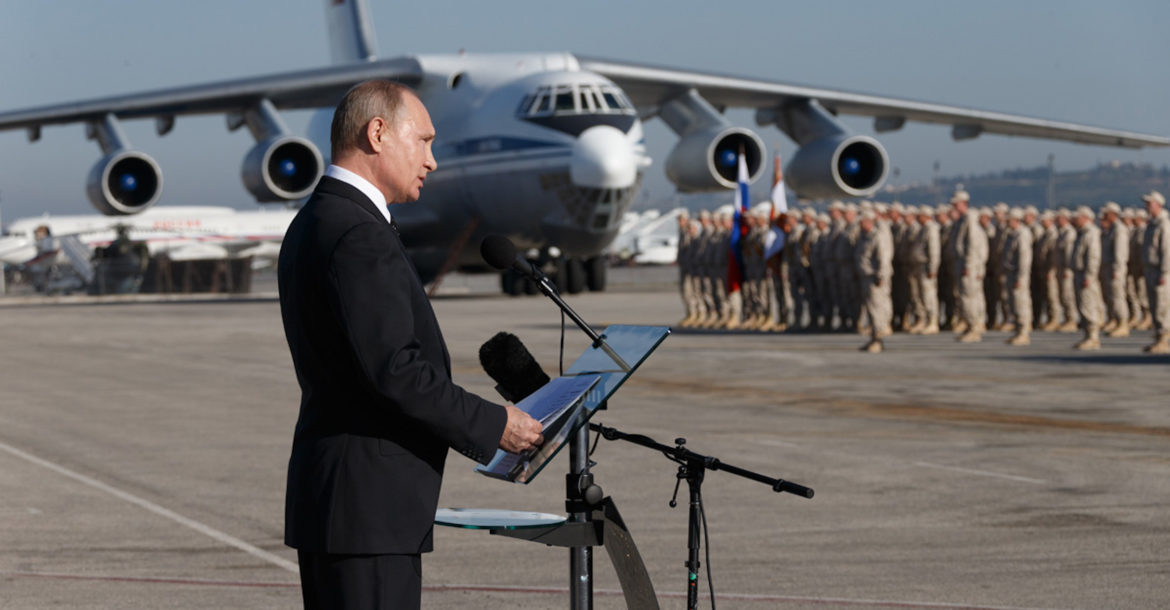
Russian President Vladimir Putin talks to the Russian forces at the Hmeimim military base in the coastal Lattakia city – January 2017 (Russian Ministry of Defense)
Fertilizer is missing in Syria, Russia exports it
After Russia dominated Palmyra phosphate, the same Russian Stroytransgaz company signed, in November 2018, with the General Fertilizers Company in Homs (the largest chemical industrial complex in Syria that produces nitrogen and phosphate fertilizers through its three plants and secures all the needs of the agricultural sector), a contract to invest the company and its three plants for a period of 40 years, subject to extension.
The contract stipulated that the Russian side restore the maintenance of the three plants and its commitment to maintaining their productivity and delivery of design capacity within two years.
The Syrian company’s share of the profits amounted to 35% compared to 65% for the Russian company, according to the terms of the contract published by the state-run Tishreen newspaper on 31 October 2018.
The fertilizer and phosphates agreements gave the Russians complete control over the most important and vital joint in the Syrian economy, as it turned Syria from a producer and exporter of phosphate and fertilizer to an importer after statements by officials in the regime’s government confirmed the import of fertilizers needed for farmers, and obstructing the sanctions imposed on Syria to secure them.
Gas and oil too
Prior to the military intervention, in 2013, the regime’s government signed an agreement with the Russian Soyuzneftegaz company to drill and explore for oil and gas off the Syrian coast, according to a 25-year contract.
In July 2015, the Russian Federation of the Gas and Oil Industry announced its efforts to invest at least 1.6 billion US dollars in energy contracts after the “situation becomes stable” in Syria.
Between September 2019 and January 2020, the regime signed four new oil exploration contracts with Russian companies.
Russia also imposed its control over the al-Thawra oil field, southwest of Raqqa city, whose production is currently estimated at about 2000 barrels per day, down from 6000 barrels before 2010.
This came after its control of the Twainan gas field in the al-Tabqa area in the Raqqa countryside, which produces about three million cubic meters of clean gas per day, 60 tons of domestic gas, and 2000 barrels of condensate.
The Foreign Policy revealed in May 2021 that “companies linked to the Wagner group are snapping up oil and gas leases—with an eye to pumping influence, not oil.”
According to emails and company records seen by Foreign Policy, “A Russian company that recently struck a deal with the Syrian government for offshore oil and gas exploration is part of a network of companies that make up the shadowy Russian mercenary group known as Wagner, which has played a pivotal role in Moscow’s destabilizing activities around the world.”
The deal with the previously unknown Russian company Kapital, which was ratified by Bashar al-Assad in March, will theoretically see the Russian company explore oil and gas in a 2,250-square-kilometer area off the coast of southern Syria. It threatens to cause a dispute with neighboring Lebanon, which has argued the area includes some of its waters, Foreign Policy reported.
At least two companies, according to Wagner-linked reports, concluded oil and gas deals with the regime in late 2019, and the Syrian People’s Assembly approved contracts for the exploration and development of three onshore blocks, each believed to contain 250 billion cubic meters of gas.
The concluded contracts are considered a reward for the mercenary groups that fought alongside the regime forces in their “most brutal” ground operations on the ground, according to Foreign Policy.
Politics first
Sinan Hatahet, Syrian researcher, told Enab Baladi through email correspondence that Russia’s economic privileges in Syria do not pay the bill for its military actions and cannot cover the cost of military intervention, even with its expected numbers, over a very long term.
These privileges are mostly not essential, considering that their goal is to increase the control tools of the Syrian regime more than its economic rent, which does not require “aggression” to preserve or expand it, according to Hatahet.
This opinion is consistent with that of political economy researcher Dr. Joseph Daher, who explained to Enab Baladi that the main dynamic of the Russian intervention is driven by geopolitical considerations more than economic goals, by securing an entrance to the warm waters of the western Mediterranean, maintaining an ally in the region, and crowding out the US in its vital space.
Daher does not deny Moscow’s interest in economic gains in Syria in addition to what is political, but the contracts that Russian companies have obtained in Syria are still relatively low compared to their military investments in Syria.
He pointed out that the Russians used military intervention in Syria as a way to showcase and promote the capabilities of their weapons.
Not enough for the Syrian regime
Views and visions differ about the extent of the Russian incursion into Syria in light of long-term agreements with economically pivotal sectors and the fate of the Syrian economy, which is experiencing many crises in the long run.
The researcher Hatahet pointed out that the duration of the contracts concluded by Russia is similar to the contracts that American and Chinese companies conclude with any country in Africa or the eastern Mediterranean in the fields of exploration and mining.
The problem is the high rate of the benefit obtained by Russian companies in Syria, as these percentages affect the Syrian state’s returns from these sources and financial and natural resources, according to the researcher.
“The regime’s percentage is the lowest, despite the fact that it has a real export crisis, its production capacity, and its lack of control over most of the oil fields,” Hatahet adds.
The regime-held areas are still witnessing a shortage of basic services such as fuel, electricity, water, and other materials that manage their production and are invested by Russian companies in Syria and despite the succession of contracts concluded over the years.
Russian gains through the Syrian file
“We do not want to throw stones at anyone’s garden, but about a year and a half ago, the International Coalition led by the United States was striking in Syria without result, which allowed (terrorists) at that time to strengthen their presence in Syria and Iraq.”
This is how Russian President Vladimir Putin paved the way for the announcement of his forces’ direct entry into the war in support of the Syrian regime seven years ago.
Putin said, “Russia was acting preventatively, to fight and destroy militants and terrorists on the territories that they already occupy, not wait for them to come to our house.”
However, researchers and observers of Syrian and Russian affairs, whom Enab Baladi interviewed, went to analyze Russia’s aspirations beyond fighting a “militant organization,” the Moscow-based political analyst Dmitry Bridzhe considered that Russia used the Syrian issue as a “pressure card” against the West, to say that Russia has changed and has established a stronger presence on the international scene.
He also believes that the Russian tendency to use Syria in this context has been clear since the beginning of Moscow’s change of its policy towards the Middle East files, which it opened with the Syrian file.
From the beginning of the Russian entry, it was clear that Putin was trying to change the external image of his country and was heading for an escalation with the West, which prompted him to support the regime, which failed to solve its internal problems, and was the reason for the expansion of protests against it.
The Russian view of the regime as a “pressure card” with an impact on the West has not changed, as Moscow was able to protect the regime, while the West failed to find a solution to the Syrian file, as it did not adopt a unified position in this context from the beginning.
These facts have enabled Moscow to appear as a “dominant” in Syria, as it is unlikely that the situation on the ground will change before a change is brought about at the level of the Russian interior, according to Bridzhe.
From isolation to the Syrian regime
Western countries sought to deepen the state of political and diplomatic isolation of Russia after its annexation of Crimea in 2014 and the annexation of the territory of Ukraine since then.
For its part, Moscow considered that interfering in a major conflict in the Middle East, in which the interests of European and Middle Eastern powers intersect, would lead to a dialogue with Russia in order to defend their interests in the Syrian file, especially if the Russian military intervention changes the balance of power in Syria.
Moscow was motivated by its hopes that the war in Syria would bring it closer to the West, improve political relations, break isolation, and ease the economic sanctions imposed on it, given that the West is also fighting “against terrorism” in Syria, and in 2014 formed an International Coalition to fight the Islamic State organization, according to Russian political analyst, Dmitry Bridzhe.
Syria and Russia have long-standing relations dating back to before the Soviet Union, and Moscow has long maintained a small naval base there, and with its military intervention, it established itself an air base and other facilities to enhance its tangible presence on the ground.
Bridzhe considered the Syrian file a gateway that Russia used to effectively restore its international presence, so it tried to present itself as a “more reliable” ally than the American side in the same file.
This was the key to clearer and more mature relations with Turkey, Algeria, Iraq, the UAE, Saudi Arabia, and many countries in the region.
Despite these relations, Moscow has not succeeded sufficiently in strengthening its relations with the countries of the region due to weakness in managing foreign policy since the collapse of the Soviet Union and the change of diplomatic cadres to groups “unable to draw a realistic and serious plan for Russian foreign policies.”
The Russian analyst read these skirmishes as an attempt to change the current world order and transform global politics into a multipolar world in which different countries play a role in solving international problems.
On 28 August, the Russian president criticized “unipolarity,” noting the need to replace it with another “based on the basic principles of justice and equality” while recognizing the right of every country and people to their own sovereign development path, according to the RT channel.
if you think the article contain wrong information or you have additional details Send Correction
النسخة العربية من المقال
-
Follow us :
Most viewed
- Intentions for popular resistance amid Israeli escalation in southern Syria
- Al-Sharaa names new Syrian government
- Kurdish Protection Units: Key point of contention between Damascus and SDF
- Syrians look forward to visiting graves of "martyrs" on Eid morning
- Syrian returnees celebrate first Eid after liberation












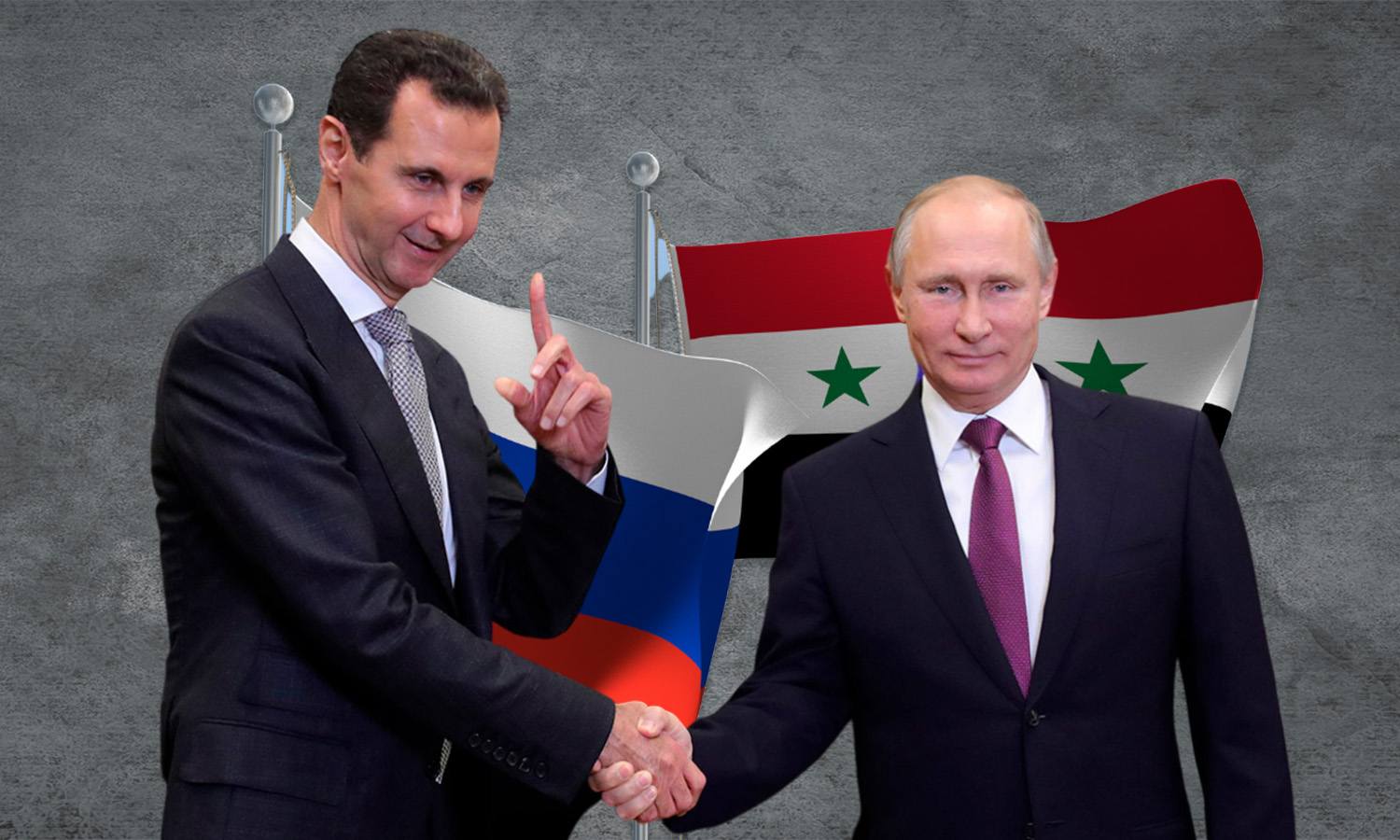
 Russia’s President Vladimir Putin and the head of the Syrian regime Bashar al-Assad (edited by Enab Baladi)
Russia’s President Vladimir Putin and the head of the Syrian regime Bashar al-Assad (edited by Enab Baladi)





 A
A
A
A
A
A
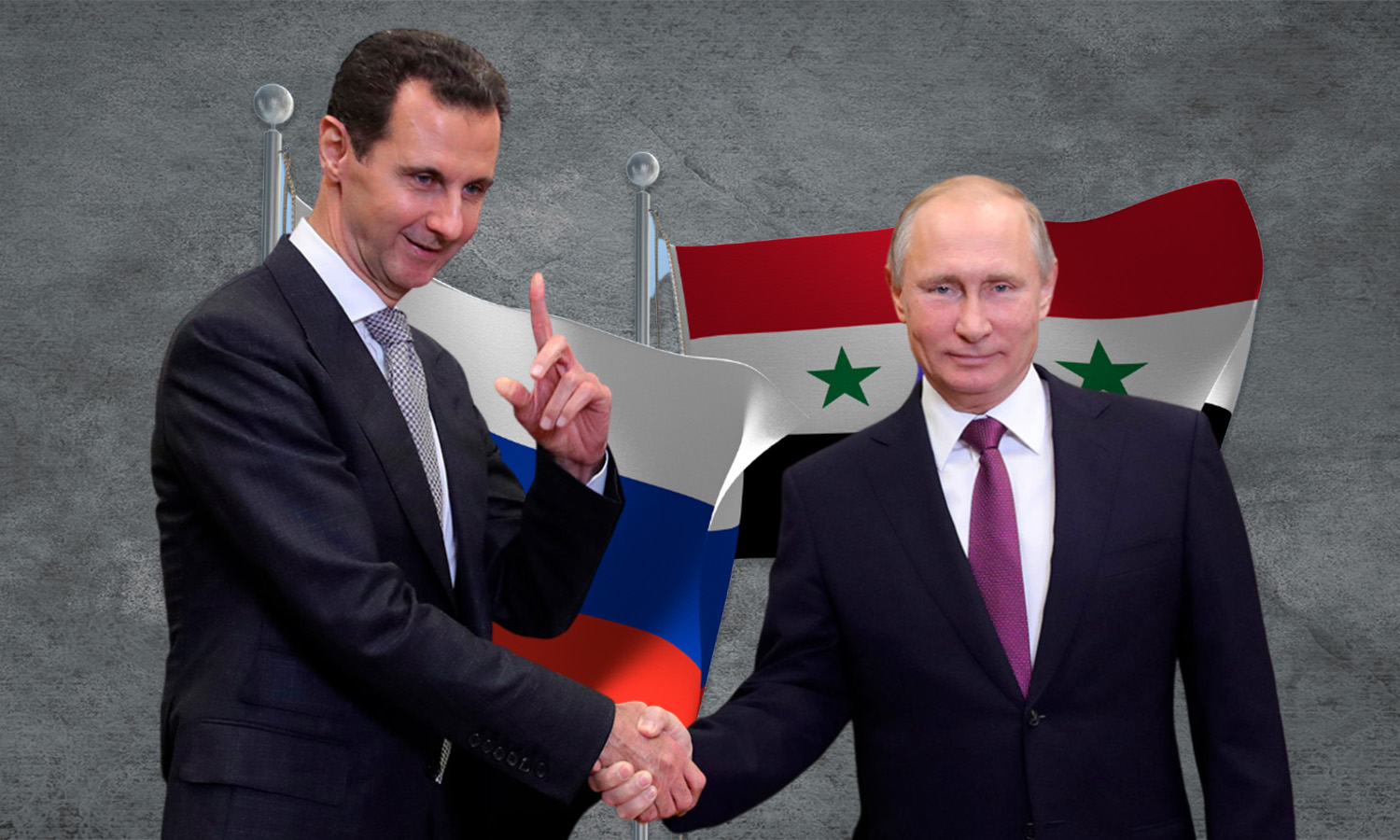
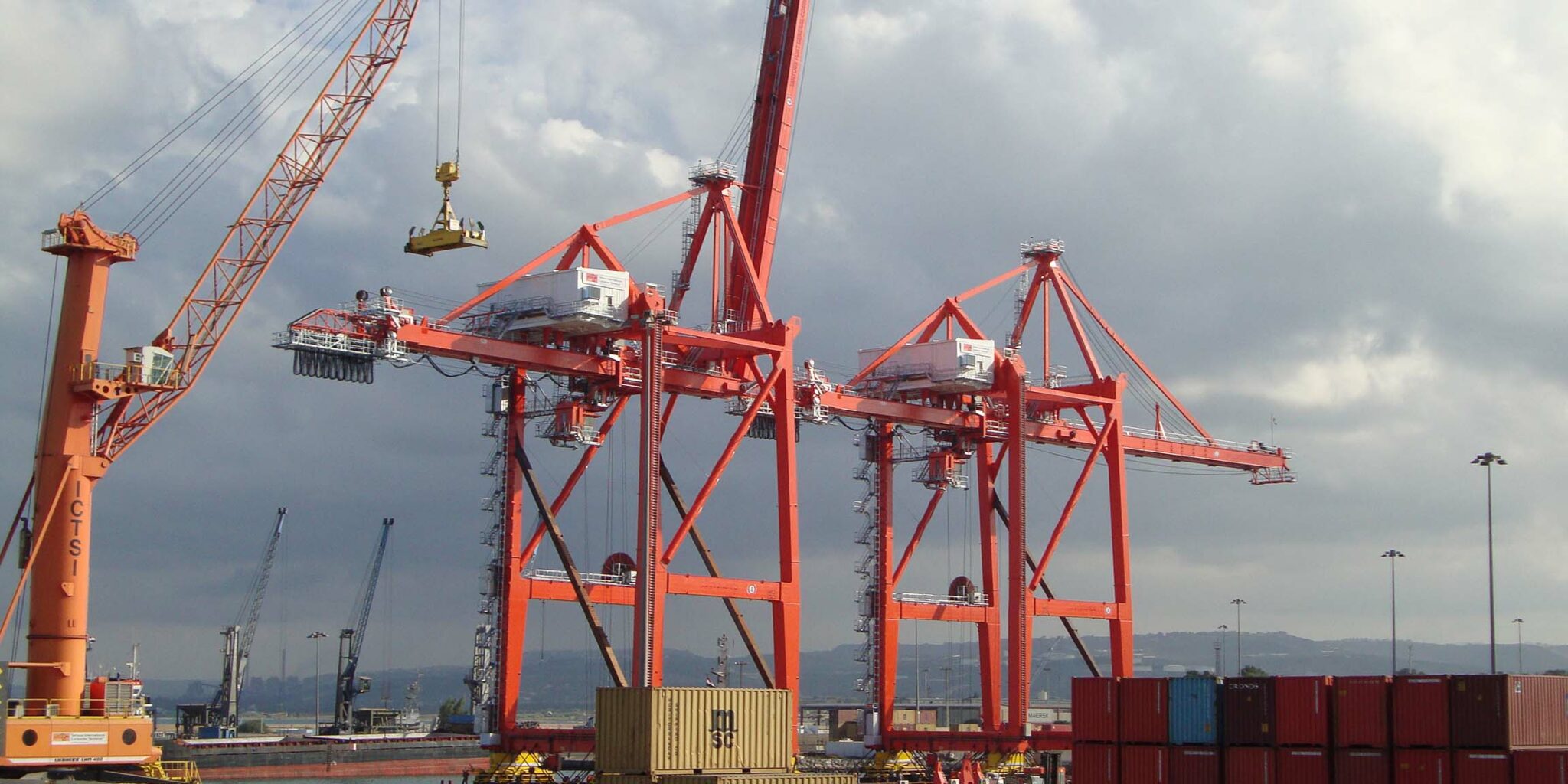





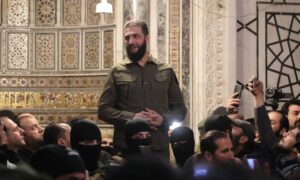
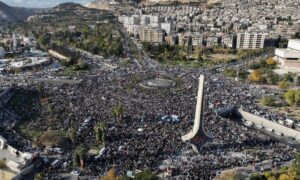
 More In-Depth
More In-Depth